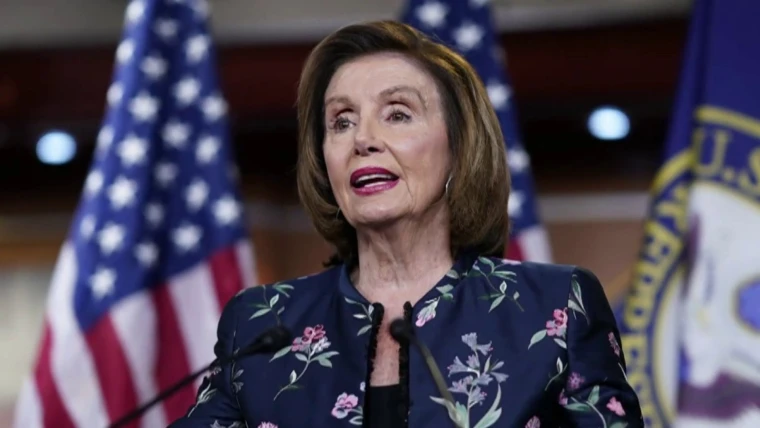Moving to a new country is a major decision that requires careful consideration of various factors. While the U.S. is often seen as a land of opportunity, there are several reasons why people might think twice before making the move. Here are ten significant reasons why relocating to the U.S. may not be the best choice.
Healthcare Costs

The United States is known for its high healthcare costs, which can be a major barrier for people considering moving there. Despite spending more on health per person than any other country, Americans often face significant out-of-pocket expenses, including deductibles and copayments, which can be financially burdensome. Navigating the health insurance system can be complex and confusing, leading to unexpected costs, especially when it comes to prescription drugs. Access to care can also be limited, with insurance coverage restrictions or the high cost of medical services leading to delays in receiving necessary treatment. The financial stress associated with healthcare costs can significantly impact quality of life, forcing difficult choices between healthcare and other essential needs. Government spending on healthcare is substantial, affecting public resources and funding for other critical services. Individuals and families can become economically vulnerable due to healthcare costs, with medical debt being a leading cause of bankruptcy in the U.S. Compared to other high-income countries, the U.S. often lags in health outcomes and access to care. There is also a significant disparity in healthcare access and quality across different socio-economic groups, contributing to inequality in health outcomes. These factors combined make healthcare costs a major consideration for anyone thinking of moving to the U.S. The financial implications can be far-reaching and affect not just health but also overall well-being and financial security.
Income Inequality

Income inequality in the U.S. is a pressing issue that reflects the widening gap between the rich and the poor. The richest Americans, especially the top 5%, have seen their incomes grow much faster than those at the bottom. Economic growth has not been evenly distributed across society, and household incomes have grown only modestly compared to the rising cost of living. The Great Recession of 2007 had a long-lasting impact on income levels, with median household incomes taking years to recover. Government policies and tax structures often favor the wealthy, exacerbating the income gap. Income inequality can lead to reduced economic mobility and slower overall economic growth. It also fosters social and political tensions, contributing to a sense of unfairness and potential social unrest.
Gun Violence

Gun violence is a critical issue in the U.S. and a significant reason why some people may hesitate to move there. The country has a high rate of gun-related incidents, including both homicides and suicides. In 2021, there were 48,830 gun-related deaths, with suicides accounting for 54% and homicides for 43%. The prevalence of firearms contributes to the ease with which individuals can access guns, leading to higher rates of violence. Despite various legislative efforts to address the issue, gun violence remains a public health crisis. The high incidence of gun violence creates a sense of insecurity that can deter people from wanting to live in the U.S.
Political Divisiveness

Political divisiveness in the U.S. is a significant factor that can discourage people from moving to the country. The nation has experienced a growing partisan divide over the years, with stark disagreements between Democrats and Republicans on a range of issues. This polarization has become more pronounced, affecting not only political discourse but also social interactions and community cohesion. The consequences of such divisiveness include government gridlock, difficulty in reaching compromises, and an environment where misinformation can thrive. For those considering a move to the U.S., the current state of political divisiveness can be a major deterrent, suggesting a society that is less welcoming and more conflict-prone.
Racial Tensions

Racial tensions in the U.S. have been a persistent issue, deeply rooted in the country’s history. Despite progress in civil rights, racial disparities persist in income, education, healthcare, and the criminal justice system. Recent years have seen a resurgence of these tensions, with high-profile incidents of police brutality and racially motivated violence bringing the issue to the forefront of national consciousness. The impact of racial tensions is far-reaching, affecting not just the communities directly involved but also the broader social fabric of the nation. The prevalence of racial tensions is a significant concern for those considering moving to the U.S., as it suggests a society still grappling with inequality and injustice.
Climate Change Challenges

The U.S. faces significant climate change challenges, which can be a deterrent for potential immigrants. The country experiences a wide range of extreme weather events, including hurricanes, wildfires, droughts, and floods. These events have become more frequent and severe due to climate change, causing widespread damage and disruption. The U.S. has made efforts to address climate change through policies and initiatives, but progress has been slow and inconsistent. The economic impact of climate change is also substantial, with costs related to disaster recovery, infrastructure repair, and health impacts. For those considering moving to the U.S., the ongoing and increasing climate change challenges are an important factor to consider.
Immigration Policies

Immigration policies in the U.S. have been a topic of intense debate and are a key consideration for those thinking about moving to the country. The U.S. immigration system is complex, with various pathways for legal immigration, including family-based immigration, employment-based visas, diversity visas, and programs for refugees and asylum seekers. Recent changes and proposals have sought to reverse previous restrictions and provide a pathway to legal status for unauthorized immigrants already in the country. However, the U.S. also faces challenges with its immigration policies, including a record number of migrant encounters at the U.S.-Mexico border. The complexity of the system and the political debates surrounding it suggest that immigration policies will continue to evolve and be a critical factor in the decision to move to the U.S.
Cost of Living

The cost of living in the U.S. can be quite high, especially in major cities and metropolitan areas. Housing is often the largest expense, with average monthly rents in expensive areas being particularly steep. Utilities, food, and transportation costs also contribute to the high cost of living. Personal care items and clothing can add further to expenses. Overall, the cost of living in the U.S. is more expensive than in many other countries, requiring a substantial income to maintain a comfortable standard of living. This high cost of living can be a deterrent for people considering moving to the U.S.
Education Costs

Education costs in the U.S. are notably high, particularly for higher education. Tuition and fees at higher education institutions can be substantial, and many students take out loans to afford their education. The burden of student loan debt can be significant, with the total outstanding student loans in the U.S. reaching over $1.73 trillion as of the third quarter of 2023. Public K-12 education is free, but spending on K-12 public education per student has nearly doubled since the 1970s. The high cost of education can deter families from moving to the U.S., especially those who value education and aspire to provide the best opportunities for their children.
Social Safety Net

The social safety net in the U.S. is a collection of programs designed to support individuals and families facing economic hardship. These programs aim to provide a minimum level of income, access to healthcare, and assistance with food and housing. However, the U.S. social safety net is often criticized for gaps in coverage and the complexity of accessing benefits. Eligibility criteria can be strict, and many who need assistance may not receive it. Additionally, the level of support provided may not be sufficient to lift individuals out of poverty, leading to ongoing financial struggles. Understanding the limitations of the social safety net is important for anyone considering moving to the U.S., as it may not offer the same level of comprehensive coverage found in some other developed countries.
While the U.S. offers many opportunities, it also presents significant challenges that potential immigrants need to consider carefully. High healthcare costs, income inequality, gun violence, political divisiveness, racial tensions, climate change challenges, complex immigration policies, high cost of living, education costs, and gaps in the social safety net are all critical factors that can impact one’s quality of life. Weighing these issues against the potential benefits is essential for making an informed decision about moving to the U.S.